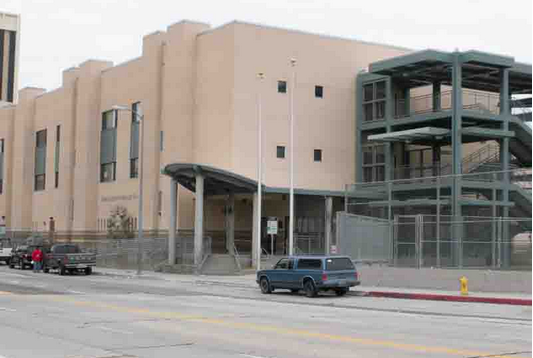What do you do when the main barrier to encouraging more students to walk and bicycle to school isn't social pressures or broken infrastructure, but a different sort of public safety hazard? What do you do when it's not motorists, but gangs that imperil children who want to walk or bike to school?
If you work with the Advancement Project, and you're working in South Los Angeles' Westlake Neighborhood and Belmont Community, you get the community involved, you get the police involved, and you make a plan.
Working with 21 different community groups, advocacy groups and government organizations, including the Los Angeles Police Department, the Advancement Project worked to create a map that showed what challenges face students walking to school and create a safe corridors program to address those needs.
“Our role has been to coordinate the amazing assets, programs and services already existing in the community," explains Maribel Meza, a policy advocate with the advancement project. "It has been a grassroots, community driven effort.”
The first step of the project was to complete basic outreach to partners and communities to identify three areas to work on as part of the Project's efforts in Westlake. Two of those programs had to do with creating safe passages for children to walk or bike to school and other places of interest. Next, meetings were held with all the stakeholders, including students and their parents, to create a mapping analysis. The mapping analysis created showed results that you probably wouldn't see in Santa Monica, identifying not just places where students would be imperiled by poor urban design but also gang recruiters or even angry alcoholics.
Meanwhile, the LAPD, parents, and gang interventionists and parents agreed to patrols on the most problematic routes for student travelers. Areas that had the highest risk would be patrolled by the LAPD, while areas of lesser but still significant challenge would be patrolled by volunteer parents before and after school.
With the routes selected and parents on board, the program will launch later this month when the school year begins.
The aforementioned coalition began work on a Safe Routes to Schools grant for John M. Liechty Middle School to bring a strong pedestrian infrastructure to the area, including better street lighting, sidewalks and road crossings. The lighting is especially important for students taking part in after school programs who often find themselves traveling home in the dark. If selected by Caltrans, it would bring $1 million to the area to improve connections to the school.
Meza believes that the community outreach and safe passages plan makes the grant proposal much stronger. “With the work of the collaborative we had a much stronger application with this City transportation grant that would bring street lights, road bumps and other environmental improvements around the school.”
To expand their program, the Advancement Project has appealed to the Robert Wood Johnson Foundation, arguing that the lack of access to schools creates a public health and obesity crisis. Kosed notes that, “Studies have shown that when students are scared in their neighborhood or walk to school it creates a public health problem.”
In addition the lack of access creates problems for student learning. The Belmont area has a program where students can choose their high school based on their interests. One school specializes in teaching students science, and another focuses on the arts. However, that diversity is underutilized when physical, safety and mental barriers keep students from traveling to the high school where they would be best served.
If awarded, the Robert Wood Johnson grant would invest $200,000 in the Project's efforts, a significant out-of-state investment for South L.A. The grant is designed to reward innovative community-based projects and based on the work going on in this South L.A. community; there are few if any communities in Southern California working as hard to make their streets safe as this one is.







